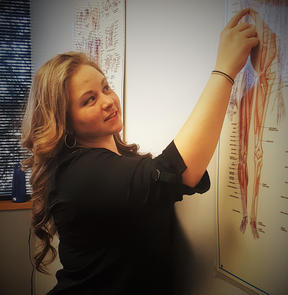When I was in college and working on my pre-med requirements, with the plans of going to medical school, someone had mentioned that being a physical therapist might be a good fit for me. At that point, I thought, “they help fix broken people, right?”. I had a very narrow understanding of what a physical therapist is, how you become one, and what exactly they do. Once I learned more, though, I completely fell in love with it, and haven’t looked back since. Everyone has different levels of exposure and understandings of the profession, so I wanted to take some time to explain more. So here goes….
History of the Physical Therapist
 http://history.amedd.army.mil/corps/medical_spec/images/39.jpg
http://history.amedd.army.mil/corps/medical_spec/images/39.jpg
The physical therapy profession has been around for decades. Before we were ever known as “physical therapists”, we were “reconstruction aides”, where we worked with those who were affected by events like the US polio epidemic and World Wars I and II. Over the years, the demand for our profession has grown dramatically to encompass a seemingly endless list of specialties within a wide variety of settings and patient populations. We are now considered to be musculoskeletal experts and movement specialists, with many of us holding doctorate degrees.
Training to Become a Physical Therapist
The training of physical therapists (PTs) has changed over the years, including the evolution from a Bachelors degree, to a Masters, and finally, a Doctorate degree.* In 1993, the first “Doctor of Physical Therapy” program opened in the United States. In Colorado, the first Doctor of Physical Therapy (DPT) class graduated about 10 years ago. All physical therapy programs have since transitioned to the DPT degree within the past few years.
As part of the pre-requisites, DPT students have already completed a Bachelors degree with the appropriate classes to get into a DPT program, including many hours in biology, chemistry, physics, calculus, English, psychology, and more. DPT students’ education encompasses a wide variety of topics, including the basic examination and evaluation techniques, treatment options, management courses, pharmacology, radiology, differential diagnosis, and countless hours of anatomy. Specific courses include topics like orthopedics and sports, neurology, pediatrics, and cardiopulmonary diseases. Students also spend many hours learning about research methods, and how to be a good consumer of research articles. Some even get their own research published in journals.
Aside from all of the hours in the classroom and laboratory settings, DPT students also spend many months working full-time in clinics, hospitals, home health, and schools, under the supervision of a licensed physical therapist. This is the opportunity for students to apply what they’ve learned in the classroom to the patients that sit before them. DPT students complete this rigorous training, both based in the classroom and in the clinic, and finally graduate with their Doctorate of Physical Therapy degree. As much as you’d think this may be the end of the adventure of becoming a physical therapist, it’s not!

Me, at my DPT graduation in 2010
The new graduates must apply for and then take the National Physical Therapy Exam (NPTE). This exam is made up of 250 questions, with 5 hours allotted to take the exam. It covers pretty much any topic covered during PT school, from some very specific questions, to more broad questions that are used to assess your general understanding and thought processes. Upon passing this exam, you now have a physical therapy license, allowing you to actually work as a physical therapist.
*One thing that is also important to note here is that a physical therapist with a Doctorate of Physical Therapy is not necessarily a better therapist than someone with a Masters or Bachelors. Much of the degree designation is related to when you went to school, and even what degree options were available at the time. Those with Bachelors and Masters degrees have also had more experience as a therapist, which is also an invaluable breadth and depth of knowledge.
The Take-Home Message
All in all, becoming a physical therapist take a lot of training and hard work, but the final result is so incredibly rewarding. We have the opportunity to follow whatever our passion is, whether it is treating patients with cancer, new moms who are dealing with incontinence, a football player with a shoulder injury, working on research to improve the profession and the care we provide for our patients, or improving the education for future therapists.
Before working toward becoming a physical therapist myself, I had no clue about what a PT really does. I think many people share the same uncertainty, even though so many could be helped by a physical therapist at some point, or multiple points, in life. So, whether you are a high school or college student wanting to know more about a potential future profession, or a member of the general public who wanted to know more about what a physical therapist does, I hope this was helpful! Do you want to know more about what happens the degree and license are achieved? See the discussion about specialties, additional training, and continuing education in the Part 2!

Article author, Alyssa Arms, PT, DPT, OCS holds a Doctor of Physical Therapy (DPT) degree from the University of Colorado Anschutz Medical Campus, and later obtained a Board Certification as an Orthopedic Clinical Specialist (OCS). She is also the President and Owner of Back in Step Physical Therapy in Centennial, Colorado, and is an instructor at her PT alma mater.

























